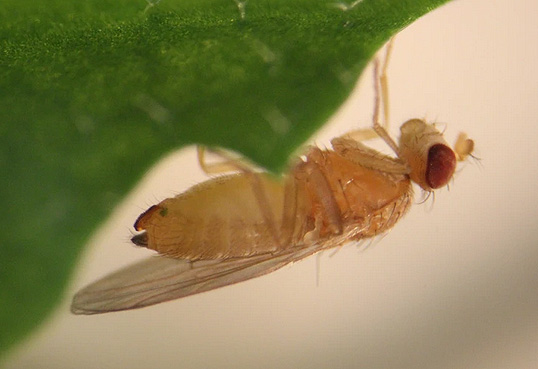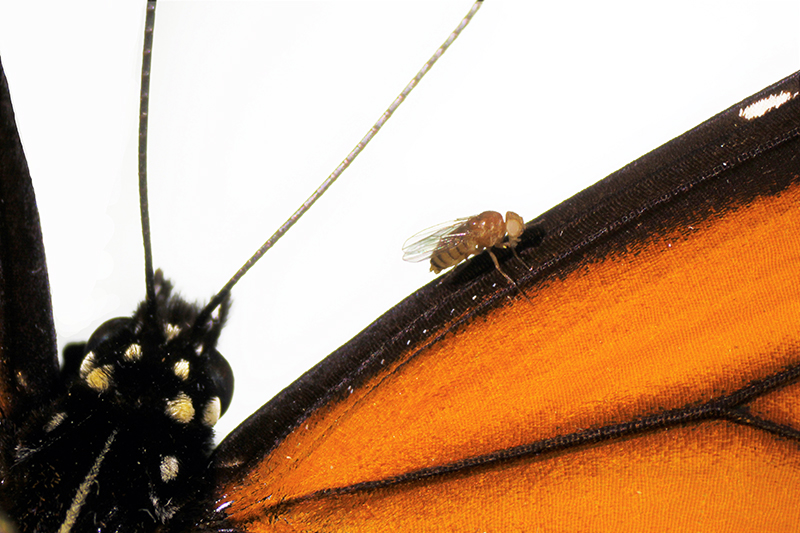I would like to introduce myself—I am the new Director of the Essig Museum of Entomology—a position formerly held by Professor Rosemary (Rosie) Gillespie, and before her, Professor Kipling (Kip) Will. I am thrilled to take on this new role and shepherd our jewel of the Berkeley Natural History Museums of the University of California into the future.
Although our 5 million plus specimens may be what first comes to mind when you hear the words “Museum of Entomology,” it is of course the people who have made the museum what it is, from its founding to now. This is why your engagement and support will be so critical in the coming months and years as the Essig spreads its wings to fulfill my vision for it to become a preeminent center for insect science in the broadest sense.
Just as the Museum of Vertebrate Zoology’s vast egg collection was used to discover that DDT had been causing thinning egg shells of birds eventually led to the ban of this pesticide and the return of nesting Peregrine falcons to Sather Tower, an irreplicable record of the natural world is found in miniature within the exoskeletons of Cal’s arthropod collection. Perhaps those secrets are in the pollen collected by a bee pinned 100 years ago or among the defensive chemicals still preserved in the pygidial glands of a ground beetle collected by Charles Darwin on the Voyage of the Beagle. Only our descendants will fully realize this record of our biosphere that simply cannot be replaced—this “evolutionary time machine” (as Executive Director Peter Oboyski calls it).
Yet, at the same time, we cannot wait for them to push the envelope. Climate change and the biodiversity crisis are upon us. Disease vectors are on the move and pollinators are in peril. The insect apocalypse threatens to pull the rug out from under all terrestrial ecosystems. New technology is already allowing us the ability to ask questions never before thought possible—including the complete genome sequencing from the DNA of museum specimens collected hundreds of years ago, allowing insight into adaptation to a rapidly changing climate even before it was recognized.
Given all of the strengths in ecology, evolution, chemistry, genomics, and data science at Berkeley, the next chapter of the Essig is exciting to contemplate, despite the challenges of our time and headwinds all of academia faces. To that end, I want you to know a bit more about my academic background so you can see where I am coming from intellectually and that I am ready to take on this important challenge.
 I am both a classically-trained entomologist, an evolutionary biologist, a chemical ecologist, and a molecular geneticist. I have always studied how insects co-evolve with other species since the beginning of my research career. It all started when I was an undergraduate in the late 1990s in Minnesota where I worked on character displacement (driven by reciprocal natural selection) among Polistes paper wasp species for my senior thesis. My research on insects continued at the University of Missouri, Columbia where I was a M.S. student in the Wilbur R. Enns Entomology Museum and worked on water beetle taxonomy and their tight ecological relationships with the aquatic plants in which many species oviposit, use as shelter, or eat. I was team captain of the winning Entomology Games team from Mizzou and even took a course in Comparative Morphology of Insects, which was one of the few like it in the world. I then did my Ph.D. in St. Louis (and lived across the street from my friend Lúcia Lohmann, the new Herbarium Director at Cal!) on co-evolutionary genetics of the Galapagos hawk and its arthropod parasite community in Ecuador. I have argued for the conservation of parasitic insects, which caught the attention of NPR’s Morning Edition, and for the use of insects as umbrella species for conservation. For better or for worse, my colleagues named a species of amblyceran feather louse after me, Myrsidea whitemani, from the Rufous-naped wren of Costa Rica.
I am both a classically-trained entomologist, an evolutionary biologist, a chemical ecologist, and a molecular geneticist. I have always studied how insects co-evolve with other species since the beginning of my research career. It all started when I was an undergraduate in the late 1990s in Minnesota where I worked on character displacement (driven by reciprocal natural selection) among Polistes paper wasp species for my senior thesis. My research on insects continued at the University of Missouri, Columbia where I was a M.S. student in the Wilbur R. Enns Entomology Museum and worked on water beetle taxonomy and their tight ecological relationships with the aquatic plants in which many species oviposit, use as shelter, or eat. I was team captain of the winning Entomology Games team from Mizzou and even took a course in Comparative Morphology of Insects, which was one of the few like it in the world. I then did my Ph.D. in St. Louis (and lived across the street from my friend Lúcia Lohmann, the new Herbarium Director at Cal!) on co-evolutionary genetics of the Galapagos hawk and its arthropod parasite community in Ecuador. I have argued for the conservation of parasitic insects, which caught the attention of NPR’s Morning Edition, and for the use of insects as umbrella species for conservation. For better or for worse, my colleagues named a species of amblyceran feather louse after me, Myrsidea whitemani, from the Rufous-naped wren of Costa Rica.
My interests in co-evolution transitioned to plant-insect interactions while I was still a Ph.D. student through an affiliation with the Missouri Botanical Garden and this continued as a postdoc at the Museum of Comparative Zoology at Harvard where I worked on plant-herbivore co-evolution, but using model plants (Arabidopsis thaliana) and herbivorous flies in the genus Scaptomyza, nested deep in the Drosophilidae, as models. I call this (thanks to Clemson Professor Trudy Mackay) “my model organism eats your model organism.”
I have done fieldwork throughout North America, South America, and Australia, sequenced the genomes of a variety of diverse animals and plants, from the California Pipevine Swallowtail Butterfly to the Broad-tailed Hummingbird (an honorary insect!) and from the California Pipevine to the California Wild Radish. Our Scaptomyza flava colony comes right from the watercress growing along Strawberry Creek. Drosophilids from the riparian area around Strawberry Creek played a major role in the early formulation of the neutral theory of molecular evolution (see here and here). We also use Drosophila melanogaster as a model organism to study how other insects have evolved, including the monarch butterfly (Danaus plexippus). This included the use of CRISPR-based genome editing to introduce into the fruit fly genetic changes from the monarch that are thought to allow for resistance to the milkweed’s heart poisons.
 My lab at Cal continues this work at the plant-animal interface, and I am a Professor in both the Integrative Biology and Molecular & Cell Biology Departments. Our research is funded by the NIH primarily and we focus on understanding the molecular to organismal bases of adaptations that arise from plant-insect interactions—primarily those mediated by toxins produced by the plant as defenses and the counter-adaptations in the herbivores. I also have affiliations with the University and Jepson Herbaria, Museum of Vertebrate Zoology, Center for Computational Biology, Helen Wills Neuroscience Institute, and Graduate Group in Microbiology. These connections will help serve the Essig’s interests as research becomes ever more interdisciplinary. I’ve also written a book for general audiences on the ways in which many animals and humans interact with defensive chemicals made by plants and other organisms, which you can read about here.
My lab at Cal continues this work at the plant-animal interface, and I am a Professor in both the Integrative Biology and Molecular & Cell Biology Departments. Our research is funded by the NIH primarily and we focus on understanding the molecular to organismal bases of adaptations that arise from plant-insect interactions—primarily those mediated by toxins produced by the plant as defenses and the counter-adaptations in the herbivores. I also have affiliations with the University and Jepson Herbaria, Museum of Vertebrate Zoology, Center for Computational Biology, Helen Wills Neuroscience Institute, and Graduate Group in Microbiology. These connections will help serve the Essig’s interests as research becomes ever more interdisciplinary. I’ve also written a book for general audiences on the ways in which many animals and humans interact with defensive chemicals made by plants and other organisms, which you can read about here.
I hope you can see why I am so thrilled to be able to take on this role as Director of the Essig. I believe that the brightest days of insect science at Cal are still ahead of us, considering the importance of these hyper-diverse animals to food webs, crop production, infectious diseases, and our culture.
Best wishes,
Noah Whiteman

